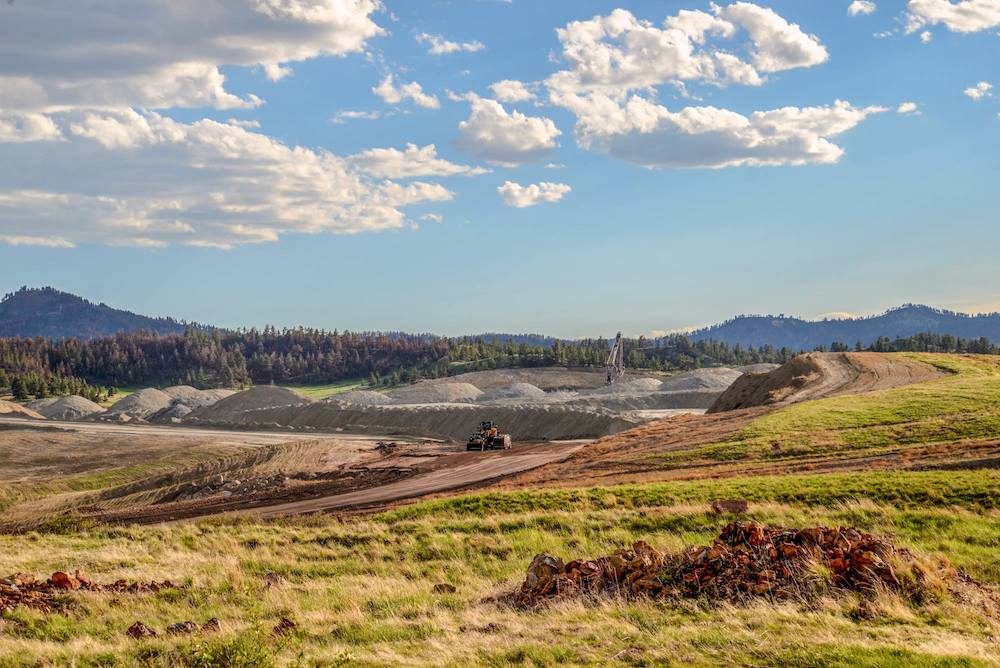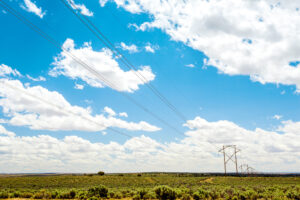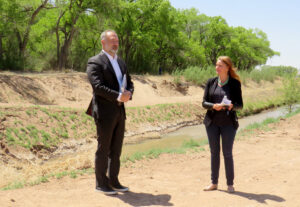Courts deal blow to southeastern Montana coal mine

A federal judge in Billings has issued a preliminary order directing the federal government to redo its analysis of a 6,500-acre expansion of a southeastern Montana coal mine.
In his Feb. 11 order, Magistrate Judge Timothy Cavan said the Office of Surface Mining Reclamation and Enforcement violated the National Environmental Policy Act by failing to take a hard look at how expanding the Rosebud Mine, which is operated by Westmoreland Rosebud Mining, LLC, would impact water quantity and quality. Cavan also said the government should have weighed the costs of greenhouse gas emissions in its project analysis, given that it listed expected socioeconomic benefits.
Without an expansion of the existing mine, Westmoreland will exhaust the supply of coal at the Colstrip complex within three to five years, so Cavan’s order has significant implications for the continued operation of the Colstrip power plant, the mine’s chief customer and one of the largest U.S. emitters of carbon dioxide.
In 2019, the Montana Environmental Information Center, Sierra Club, WildEarth Guardians, 350 Montana and Indian People’s Action sued the Office of Surface Mining Reclamation and Enforcement, a federal agency housed within the Interior Department, over its approval of the mine expansion. The groups argued that the government failed to adequately consider the expansion’s cumulative effects on surface water and how continued withdrawals of water from the Yellowstone River to operate the coal-fired power plant would impact endangered pallid sturgeon.
The expansion increases the size of the 54-year-old mine by 25%. If approved, the expansion is expected to yield 70.8 million tons of recoverable coal and extend the mine’s operational life by eight years, according to Cavan’s order. (A 2019 overview of the project estimated it would extend the mine’s life by 19 years.)
Virtually all the mine’s coal is sent by a conveyor system to the Colstrip power plant, where it’s burned to supply power to utility companies in Montana, Washington and Oregon. The power plant pipes in Yellowstone River water from 30 miles away, consuming between 22,000 and 50,000 acre-feet of river water annually.
Cavan said the government’s Environmental Impact Statement “fails to provide the detailed, quantified analysis” required by the National Environmental Policy Act. He said the EIS falls short of a “meaningful analysis of identified actions” regarding surface waters. A three-sentence EIS conclusion that touches on cumulative impacts to water quantity and quality ranging from loss of springs and pools to backfilling surface waters with spoil lacks substance, he said.
Cavan also sided with the plaintiffs regarding the expansion’s expected impact on greenhouse gas emissions. He said the EIS listed the expansion’s expected socioeconomic benefits such as continued employment, ongoing royalty payments, and contributions to federal, state and local governments via tax collections, but failed to include a “balanced quantitative analysis of the economic costs of greenhouse gas emissions.” He described the resulting analysis as “skewed.”
The defendants argued that the plaintiffs’ claims about the relationship between the mine expansion and the Colstrip power plant’s water withdrawals from the Yellowstone River lack merit because the plant would operate with coal from other sources if the expansion were denied. Cavan disagreed, saying, “the record is unclear on this point” because the plant is currently restricted to burning coal from the permit areas of the Rosebud Mine.
“It is conceivable that without the Area F expansion, Power Plant operations would cease,” Cavan wrote, noting that NorthWestern Energy, one of the plant’s owners, has said, “[it] would be cost prohibitive for the Colstrip Co-Owners to buy and ship coal from a mine other than the Colstrip Complex.”
A spokesperson for NorthWestern Energy, which supplies power to two-thirds of the state’s residents, didn’t return a request for comment on Cavan’s order by press time Tuesday afternoon.
An emailed statement from Westmoreland said the company is “most surprised” by the order.
“Despite this disappointment, Westmoreland will move forward in a positive manner and resume our working relationships with the U.S. Office of Surface Mining Reclamation and Enforcement (“OSMRE”) and the Montana Department of Environmental Quality (“DEQ”), to revisit and remedy any concerns raised in the case regarding some elements of the EIS,” the statement read.
“We will take all steps necessary to resolve this situation and ensure that our Rosebud Mine continues to operate for many years to come for the benefit of all the stakeholders dependent on this essential Montana business,” Westmoreland Chief Operating Officer Joe Micheletti said.
MEIC Director of Policy and Legislative Affairs Anne Hedges said in an emailed statement that the Office of Surface Mining has been “cutting corners and ignoring the harm that the Rosebud Mine is causing to water quality and quantity.”
“The Trump administration’s disdain for protecting water resources and climate was bad enough but the Biden Administration continues to ignore science and economics and defend the poor decisions of the previous Administration,” Hedges said. “Its insistence on continuing to turn a blind eye to problems at this mine will result in long term harm to our water and the climate.”
Colstrip emitted 15 million metric tons of carbon dioxide in 2019 according to E&E News.
Another claim brought by the plaintiffs centered on whether the Office of Surface Mining was deficient in considering a range of alternatives to the proposed expansion as required by NEPA. Here Cavan sided with defendants, finding that the EIS included an adequate number and variety of alternative proposed actions.
Cavan’s order gives the government one year to correct its NEPA violations. During that time, Westmoreland can continue mining in Area F. The existing permit will be invalidated after a year.
Cavan’s order is not final. Parties to the lawsuit have 14 days to appeal the order. After that, a more senior federal judge, Susan Watters, will take Cavan’s recommendations into consideration before issuing a final order.
Shiloh Hernandez, an Earthjustice attorney representing the plaintiffs, said he expects Watters to accept Cavan’s order.
This article was originally posted on Courts deal blow to southeastern Montana coal mine







